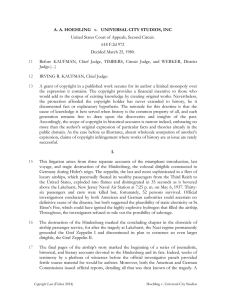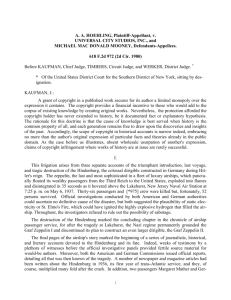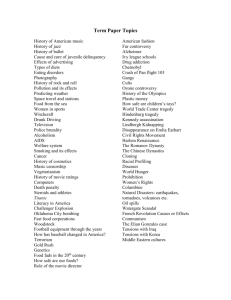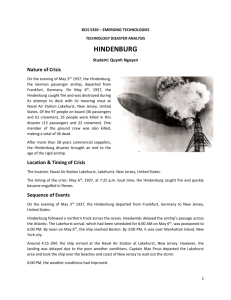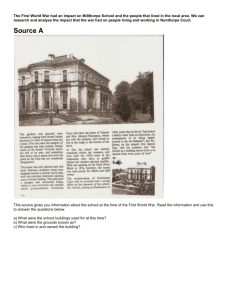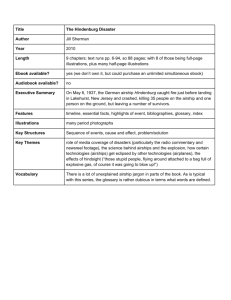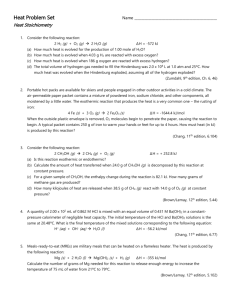Hindenburg comprehension
advertisement
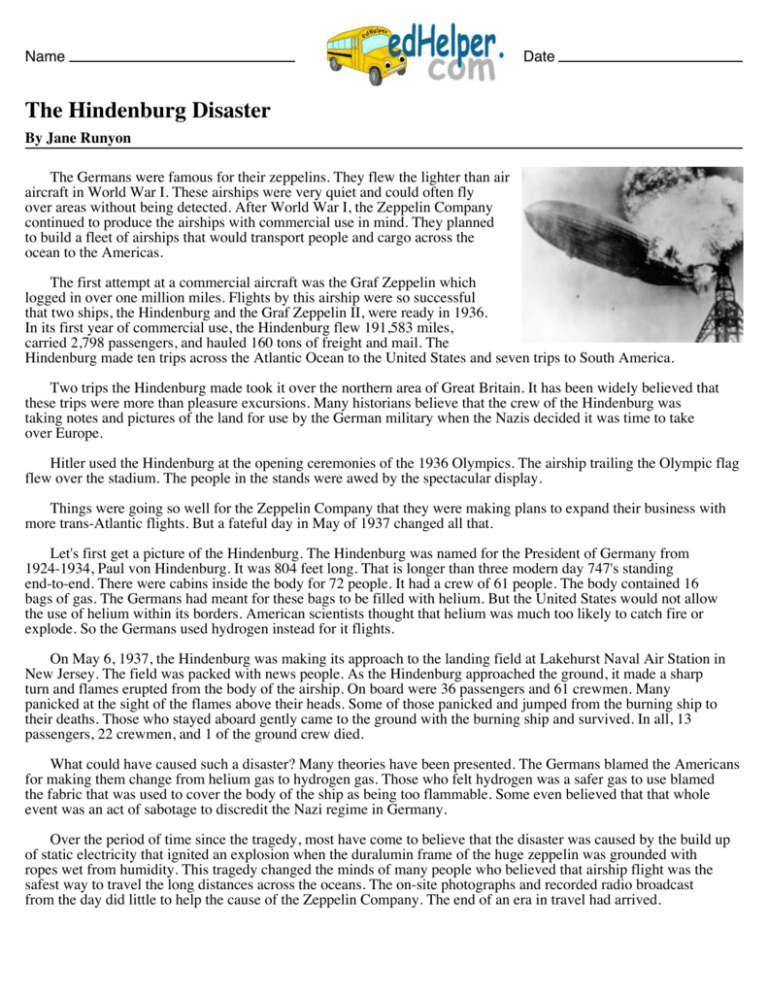
Name Date The Hindenburg Disaster By Jane Runyon The Germans were famous for their zeppelins. They flew the lighter than air aircraft in World War I. These airships were very quiet and could often fly over areas without being detected. After World War I, the Zeppelin Company continued to produce the airships with commercial use in mind. They planned to build a fleet of airships that would transport people and cargo across the ocean to the Americas. The first attempt at a commercial aircraft was the Graf Zeppelin which logged in over one million miles. Flights by this airship were so successful that two ships, the Hindenburg and the Graf Zeppelin II, were ready in 1936. In its first year of commercial use, the Hindenburg flew 191,583 miles, carried 2,798 passengers, and hauled 160 tons of freight and mail. The Hindenburg made ten trips across the Atlantic Ocean to the United States and seven trips to South America. Two trips the Hindenburg made took it over the northern area of Great Britain. It has been widely believed that these trips were more than pleasure excursions. Many historians believe that the crew of the Hindenburg was taking notes and pictures of the land for use by the German military when the Nazis decided it was time to take over Europe. Hitler used the Hindenburg at the opening ceremonies of the 1936 Olympics. The airship trailing the Olympic flag flew over the stadium. The people in the stands were awed by the spectacular display. Things were going so well for the Zeppelin Company that they were making plans to expand their business with more trans-Atlantic flights. But a fateful day in May of 1937 changed all that. Let's first get a picture of the Hindenburg. The Hindenburg was named for the President of Germany from 1924-1934, Paul von Hindenburg. It was 804 feet long. That is longer than three modern day 747's standing end-to-end. There were cabins inside the body for 72 people. It had a crew of 61 people. The body contained 16 bags of gas. The Germans had meant for these bags to be filled with helium. But the United States would not allow the use of helium within its borders. American scientists thought that helium was much too likely to catch fire or explode. So the Germans used hydrogen instead for it flights. On May 6, 1937, the Hindenburg was making its approach to the landing field at Lakehurst Naval Air Station in New Jersey. The field was packed with news people. As the Hindenburg approached the ground, it made a sharp turn and flames erupted from the body of the airship. On board were 36 passengers and 61 crewmen. Many panicked at the sight of the flames above their heads. Some of those panicked and jumped from the burning ship to their deaths. Those who stayed aboard gently came to the ground with the burning ship and survived. In all, 13 passengers, 22 crewmen, and 1 of the ground crew died. What could have caused such a disaster? Many theories have been presented. The Germans blamed the Americans for making them change from helium gas to hydrogen gas. Those who felt hydrogen was a safer gas to use blamed the fabric that was used to cover the body of the ship as being too flammable. Some even believed that that whole event was an act of sabotage to discredit the Nazi regime in Germany. Over the period of time since the tragedy, most have come to believe that the disaster was caused by the build up of static electricity that ignited an explosion when the duralumin frame of the huge zeppelin was grounded with ropes wet from humidity. This tragedy changed the minds of many people who believed that airship flight was the safest way to travel the long distances across the oceans. The on-site photographs and recorded radio broadcast from the day did little to help the cause of the Zeppelin Company. The end of an era in travel had arrived. Name Date The Hindenburg Disaster Questions 1. The Hindenburg was a war plane. A. False B. True 2. What did the Germans use zeppelins for in World War I? A. Flying silently over enemy territory B. Sightseeing C. Transporting cargo D. Transporting troops 3. Who was the Hindenburg named for? A. The inventor of zeppelins B. The president of the Zeppelin Company C. The president of Germany D. The commander of the air force 4. Why did the Hindenburg use hydrogen to fly? 5. Why did more people survive the explosion than died in it? 6. How many miles did the Hindenburg fly in 1936? A. It didn't fly that year. B. Over a million C. About one hundred thousand D. About half a million 7. What ocean did the Hindenburg fly over? A. Atlantic Ocean B. Pacific Ocean C. Arctic Ocean D. Indian Ocean 8. What did the British believe the Hindenburg was used for in 1936? A. Sightseeing B. Spying on European countries C. Moving wounded soldiers D. A warship Name Date What does it mean to sabotage something? Why would someone want to sabotage a zeppelin? What is a zeppelin? Would you like to fly in a zeppelin?

